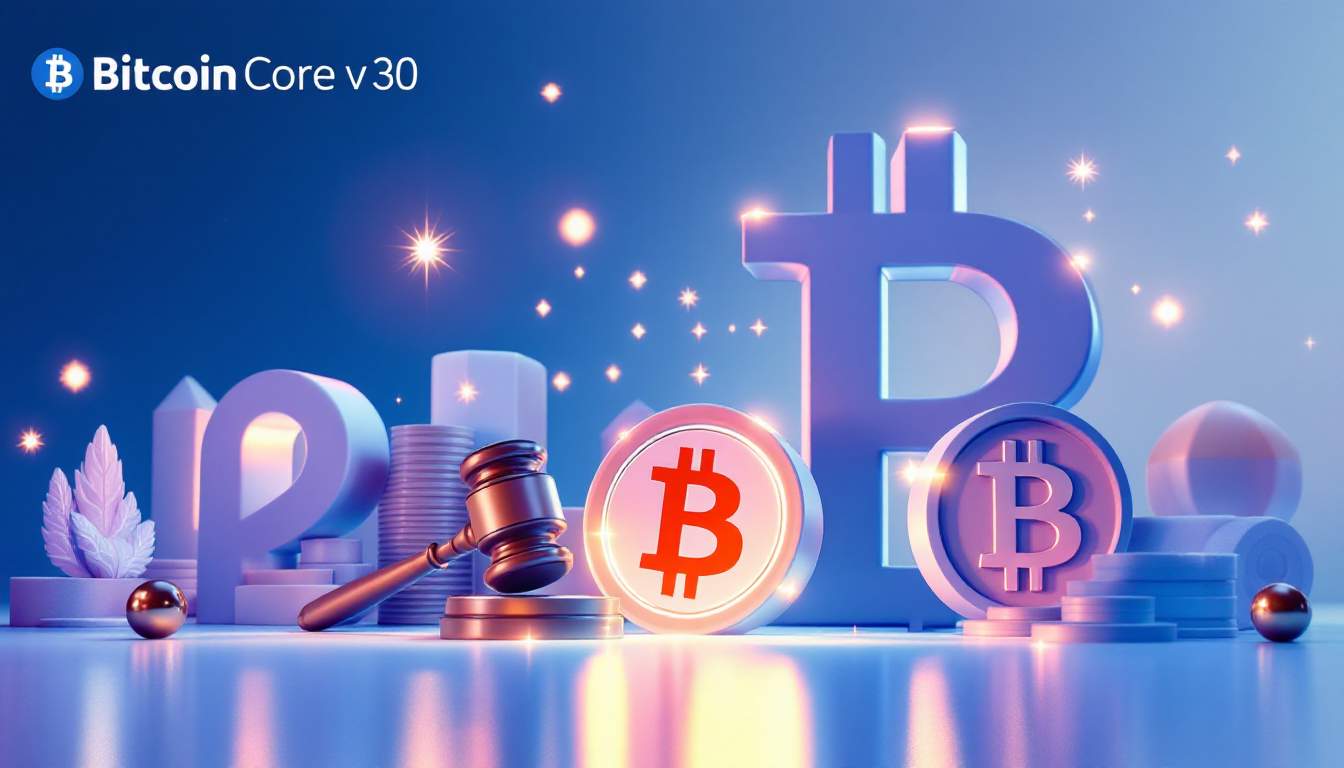
Recently, Bitcoin Core v30 has implemented a crucial modification, increasing the OP_RETURN data limit from 80 bytes to an astonishing 100,000 bytes. Why is this important? This adjustment allows a significantly larger volume of non-financial data to be integrated into Bitcoin transactions. While this change is intended to boost the network’s functionality, it has ignited fervent discussions within the cryptocurrency community. Supporters of this shift assert that it will enable the creation of more advanced decentralized applications, potentially making Bitcoin a more adaptable platform. However, there are apprehensions that this change might compromise Bitcoin’s original aim as a peer-to-peer electronic cash system, leading to worries about blockchain bloat and heightened operational expenses for node operators.
The OP_RETURN debate mirrors the Blocksize Wars of 2017, which revolved around Bitcoin’s scalability. What lessons from the Blocksize Wars are applicable here? Firstly, community consensus plays a critical role in implementing protocol changes. The acceptance of SegWit through a user-activated soft fork demonstrated that user consensus can trump the interests of miners and corporations. Similarly, the OP_RETURN debate requires inclusive decision-making, ensuring that all stakeholders can express their views on block space utilization.
The tension between enhancing block size for more transactions and upholding decentralization is a recurring theme. How can we allocate block space efficiently without sacrificing Bitcoin’s decentralized essence? The OP_RETURN debate raises similar concerns, inviting us to consider how to utilize the increased data capacity effectively.
The limitations imposed by the original block size spurred the development of Layer 2 solutions like the Lightning Network. How might the OP_RETURN change inspire innovation? Developers may be encouraged to create new applications that harness the increased capacity without compromising Bitcoin’s core tenets.
The increase in the OP_RETURN data limit brings significant legal risks for Bitcoin node operators. Why is this concerning? With the capability to embed larger data volumes in transactions, there’s an increased chance that nodes may unintentionally host illegal content, such as child sexual abuse material (CSAM). This exposure could result in criminal or civil liability for node operators, as they could be seen as facilitating the storage and dissemination of such material.
Legal experts have raised alarms that the OP_RETURN change could modify the implicit legal nature of running a full node. What are the implications? Without mechanisms to allow operators to non-disruptively delete illegal content, the risk of legal consequences could discourage individuals from running nodes, potentially fracturing the community. This situation reflects the concerns voiced during the Blocksize Wars, where governance and legal ramifications were central to the discussion.
Bitcoin was initially crafted as a decentralized, peer-to-peer electronic cash system, facilitating direct transactions without intermediaries. However, the OP_RETURN change introduces friction between innovation and Bitcoin’s core identity. Does this shift threaten Bitcoin’s identity as a cash system? As the network evolves to encompass broader applications, there’s a chance that Bitcoin may drift away from its purpose as a medium of exchange.
The debate surrounding the OP_RETURN change encapsulates a broader struggle within the community about Bitcoin’s future direction. While some advocate for broadening its use cases, others fear it could dilute Bitcoin’s identity as a cash system. This tension is reminiscent of the discussions during the Blocksize Wars, where contrasting visions for Bitcoin’s future led to significant community rifts.
The increased OP_RETURN data limit holds promise for innovation within the Bitcoin ecosystem. What opportunities does this present? Developers may harness this expanded capacity to create new applications utilizing non-financial data, such as metadata or inscriptions. This could lead to the emergence of decentralized applications that enhance user experience and expand Bitcoin’s functionality.
Moreover, the OP_RETURN change may facilitate Bitcoin’s integration into diverse sectors, including crypto payroll systems and compliance solutions. As businesses explore crypto-friendly payroll platforms and treasury APIs, the ability to embed pertinent data within transactions could streamline operations and enhance efficiency.
In summary, the OP_RETURN debate marks a pivotal moment for Bitcoin, reflecting lessons gleaned from the Blocksize Wars while raising pressing questions about governance, legal risks, and Bitcoin’s future as a peer-to-peer cash system. As the community grapples with these challenges, prioritizing inclusive decision-making and balancing competing interests will be essential to foster innovation while safeguarding Bitcoin’s core principles.
Get started with Crypto effortlessly. OneSafe brings together your crypto and banking needs in one simple, powerful platform.
Ethereum's evolution to a world ledger enhances fintech compliance in Asia, driving stablecoin adoption and transforming payroll solutions for startups.
Web3 leveraged trading signals a major shift as TradFi merges with DeFi, paving the way for innovative compliance and capital strategies in finance.
The OP_RETURN change in Bitcoin Core v30 raises critical questions about governance, legal risks, and Bitcoin's identity as a peer-to-peer cash system.
Begin your journey with OneSafe today. Quick, effortless, and secure, our streamlined process ensures your account is set up and ready to go, hassle-free
